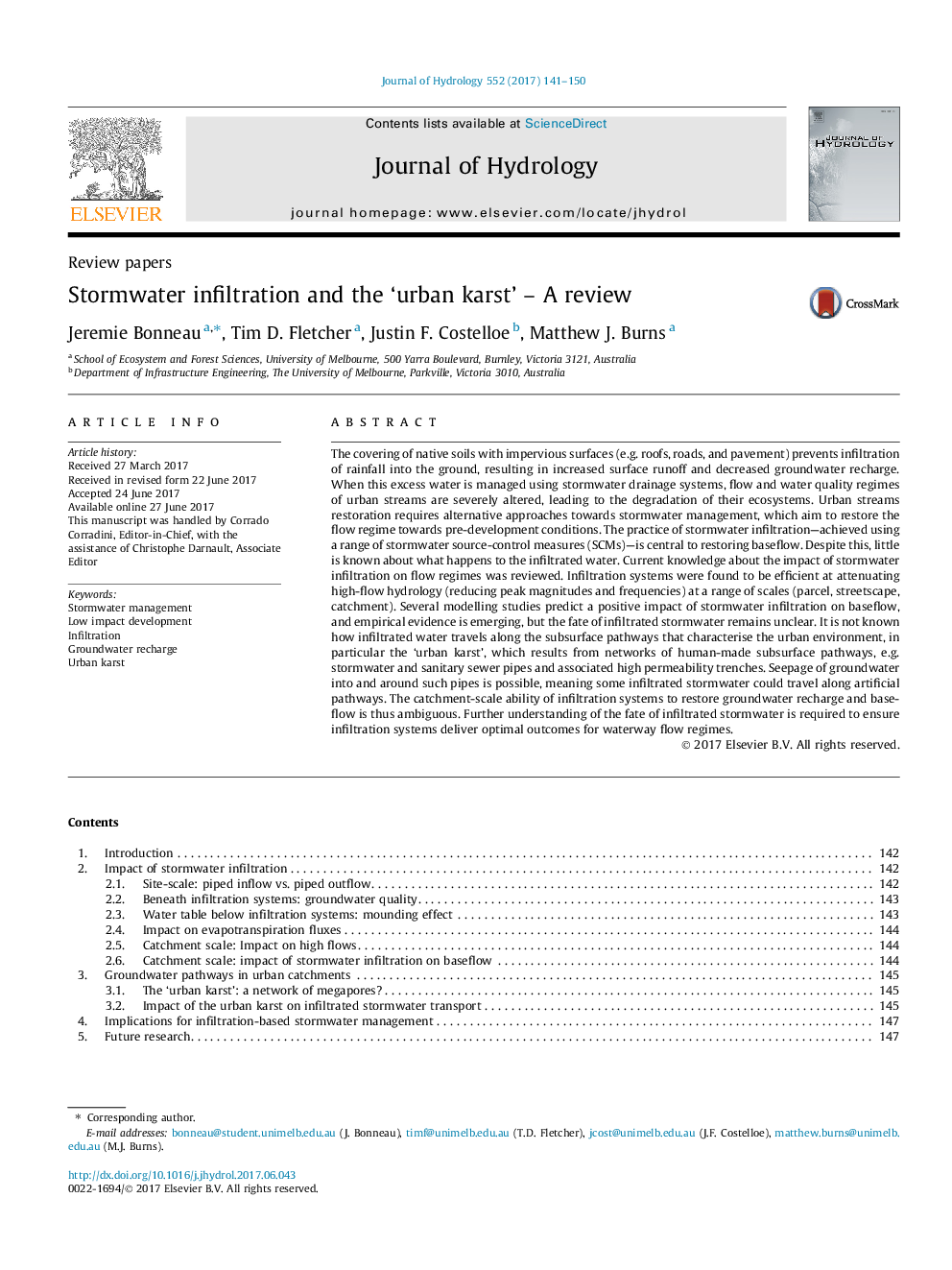| کد مقاله | کد نشریه | سال انتشار | مقاله انگلیسی | نسخه تمام متن |
|---|---|---|---|---|
| 5771150 | 1629902 | 2017 | 10 صفحه PDF | دانلود رایگان |
- Infiltration-based stormwater management reduce peaks and volumes of urban runoff.
- Stormwater infiltration is promoted to restore groundwater recharge.
- The fate of infiltrated stormwater and its impact on baseflow is poorly known.
- Impacts of LIDs could be altered by the 'urban karst' (pipes, trenching).
The covering of native soils with impervious surfaces (e.g. roofs, roads, and pavement) prevents infiltration of rainfall into the ground, resulting in increased surface runoff and decreased groundwater recharge. When this excess water is managed using stormwater drainage systems, flow and water quality regimes of urban streams are severely altered, leading to the degradation of their ecosystems. Urban streams restoration requires alternative approaches towards stormwater management, which aim to restore the flow regime towards pre-development conditions. The practice of stormwater infiltration-achieved using a range of stormwater source-control measures (SCMs)-is central to restoring baseflow. Despite this, little is known about what happens to the infiltrated water. Current knowledge about the impact of stormwater infiltration on flow regimes was reviewed. Infiltration systems were found to be efficient at attenuating high-flow hydrology (reducing peak magnitudes and frequencies) at a range of scales (parcel, streetscape, catchment). Several modelling studies predict a positive impact of stormwater infiltration on baseflow, and empirical evidence is emerging, but the fate of infiltrated stormwater remains unclear. It is not known how infiltrated water travels along the subsurface pathways that characterise the urban environment, in particular the 'urban karst', which results from networks of human-made subsurface pathways, e.g. stormwater and sanitary sewer pipes and associated high permeability trenches. Seepage of groundwater into and around such pipes is possible, meaning some infiltrated stormwater could travel along artificial pathways. The catchment-scale ability of infiltration systems to restore groundwater recharge and baseflow is thus ambiguous. Further understanding of the fate of infiltrated stormwater is required to ensure infiltration systems deliver optimal outcomes for waterway flow regimes.
Journal: Journal of Hydrology - Volume 552, September 2017, Pages 141-150
